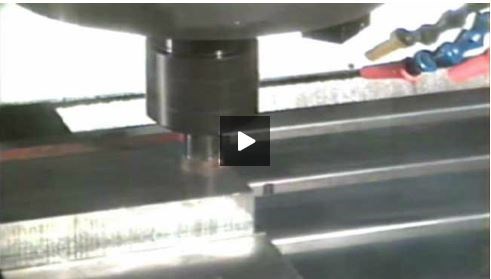Average Chip Thickness: What It Is and Why You Should Care
During milling applications, chips that are too thin might indicate inadequate heat dissipation that can cause premature insert wear. Too thick, and cutting forces might be high enough to break inserts outright. Cutting parameters should be set to attain a middle ground.
Share






A good machinist is somewhat like a soothsayer, except the tools of the trade in this case are metal chips rather than bones or tea leaves. Yet according to ’ Todd Miller, even those who understand the wealth of knowledge that can be gained from examining the shavings left over from a milling operation often overlook one key factor: the importance of average chip thickness.
As indicated by the video above, the results of attaining the correct average chip thickness for a particular insert speak for themselves. The first cut is a full slotting application—that is, 100 percent of the tool diameter is engaged. Each subsequent cut reduces the tool’s engagement. Note that the sound generated by the cutting action is virtually indistinguishable at every level below 100 percent. That’s because cutting parameters have been set with the goal of maintaining the same average chip thickness regardless of radial engagement.
Mr. Miller says aiming for that goal can go a long way toward alleviating problems with premature insert failure, poor surface finish, work hardening, vibration or deflection. Here’s why.

Related Content
-
4 Commonly Misapplied CNC Features
Misapplication of these important CNC features will result in wasted time, wasted or duplicated effort and/or wasted material.
-
6 Variations That Kill Productivity
The act of qualifying CNC programs is largely related to eliminating variations, which can be a daunting task when you consider how many things can change from one time a job is run to the next.
-
4 Tips for Staying Profitable in the Face of Change
After more than 40 years in business, this shop has learned how to adapt to stay profitable.












